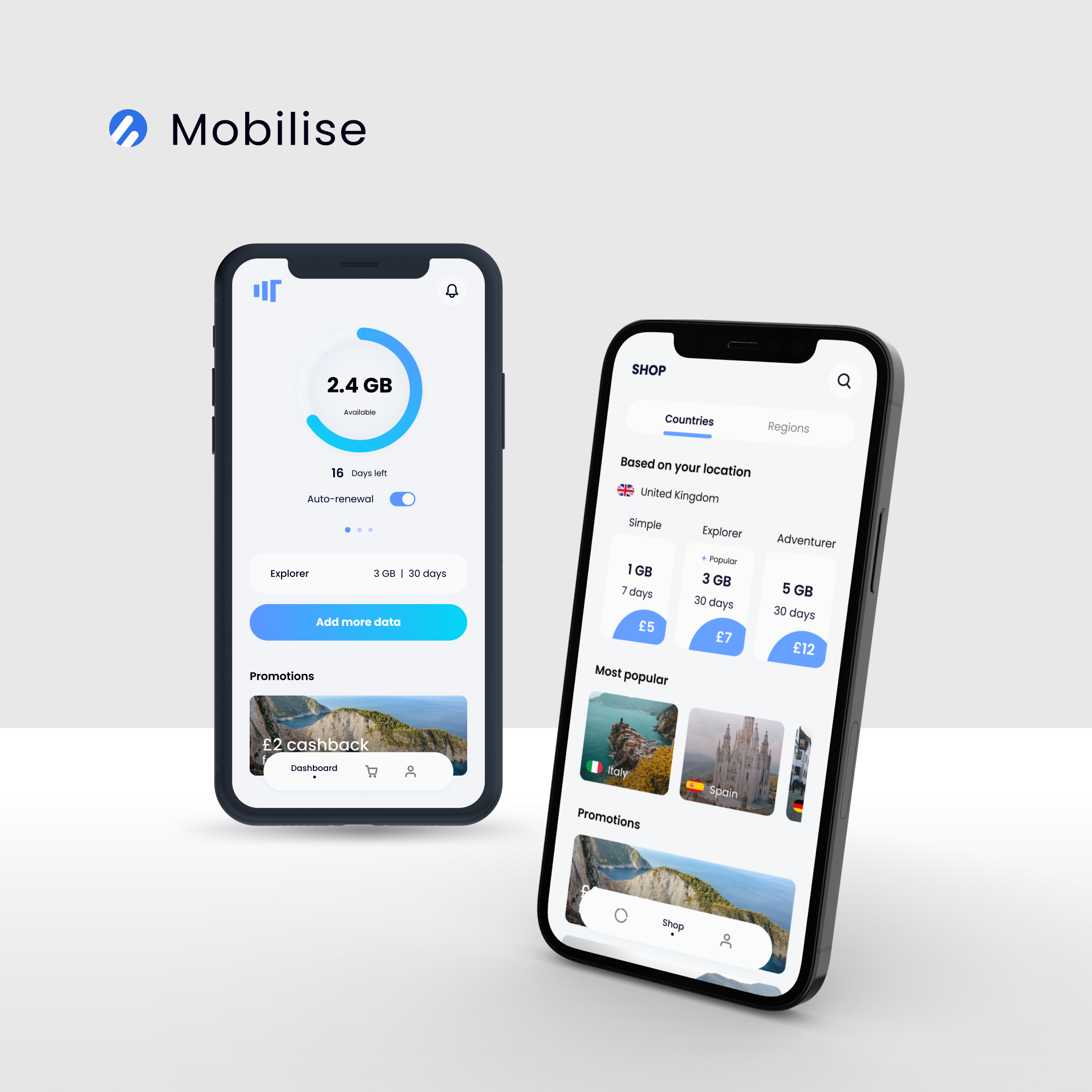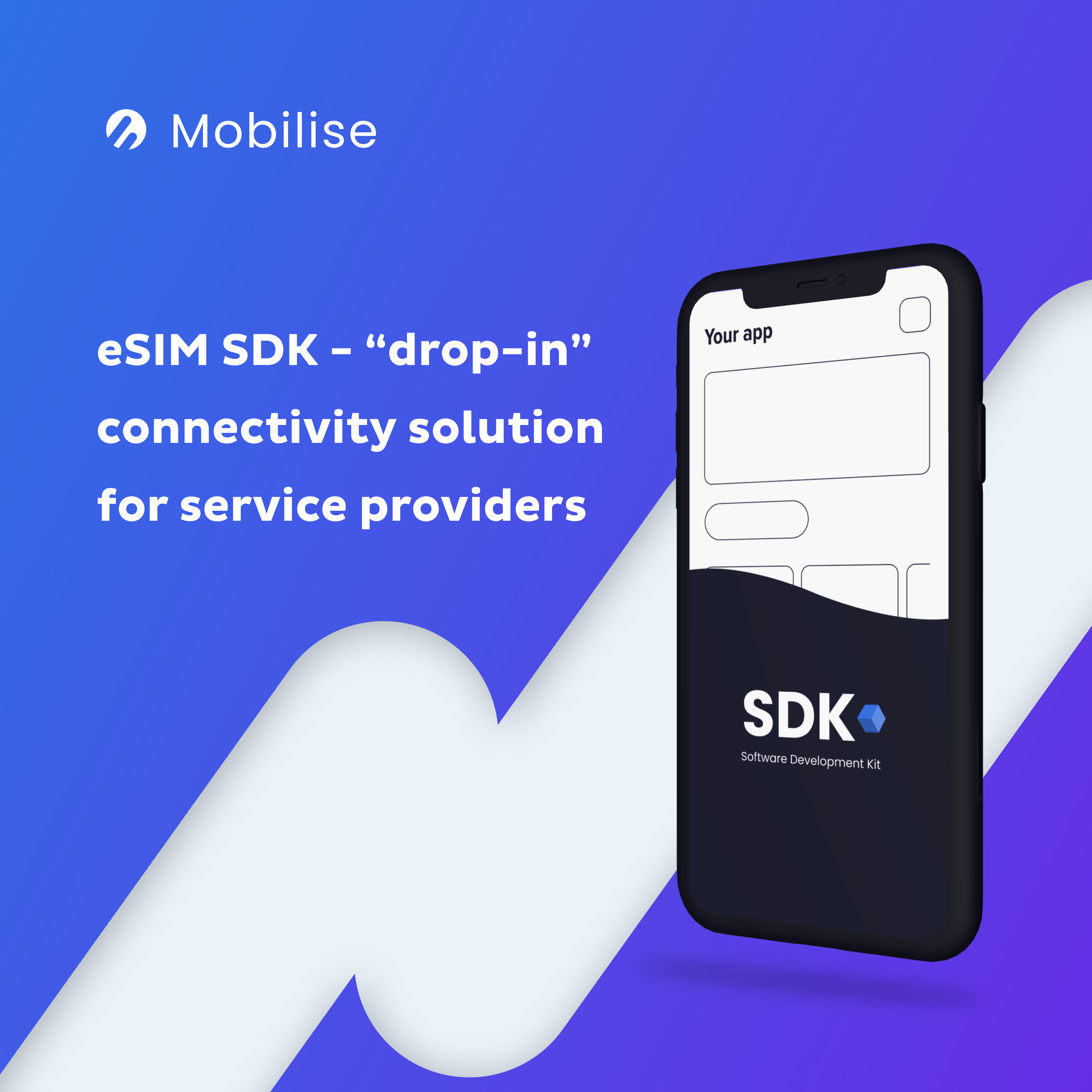In recent years, the travel industry has witnessed a remarkable surge in the adoption of eSIM technology, revolutionising the way travellers stay connected globally.
With the global eSIM for travel market projected to reach USD 6345.54 million by 2028, it’s evident that travellers are increasingly seeking seamless connectivity solutions.
However, amid this growth, challenges such as fierce competition and complex market dynamics have emerged. In response, a new approach – Embedded Connectivity – offers a promising alternative for travel operators.
TL;DR
- The travel eSIM market has seen exponential growth, with the number of providers soaring to almost 100.
- Launching eSIM propositions faces hurdles like intense price competition, high marketing costs, and the challenging Apple eSIM entitlement process.
- The travel industry is exploring eSIM, with Kiwi.com and WizzAir launching web-based eSIM services.
- Embedded Connectivity offers a fresh perspective by allowing eSIM services without direct price competition and with minimal financial and technical overhead.
Travel eSIM market overview
With the exponential growth of eSIM in the travel market, the number of travel eSIM providers has increased too. From merely a few back in 2020, the number has soared to around 100.
There are a few reasons that accelerated the travel eSIM market growth:
- Customer demand – The adoption of eSIM technology in the travel industry has been primarily driven by an increase in eSIM awareness and thus demand for seamless connectivity among travellers.
- Advantages over physical SIMs – eSIMs offer advantages over traditional physical SIM cards, such as remote provisioning and flexibility to switch between multiple mobile networks without the need to switch out SIM cards.
- Surge in international travel – The growth of the travel eSIM market is fuelled by the rise in international travel, digital nomadism, and remote work trends, which require reliable and cost-effective connectivity solutions.
- Regulatory support – Regulatory initiatives, such as the European Union’s eSIM regulations, have further propelled the adoption of eSIM technology. By simplifying the activation process and promoting interoperability among mobile network operators.
- Expansion into wearables, IoT – Emerging trends, such as the integration of eSIMs into wearable devices, smart vehicles, and IoT applications, are expanding the scope of the travel eSIM market beyond smartphones and tablets.
- Dynamic market landscape – Both established telecommunications companies and innovative start-ups compete for market share through partnerships, product differentiation, and geographic expansion strategies.
Challenges
When launching eSIM propositions, providers would normally go one of two ways: release a stand-alone eSIM app or provide web-based eSIM offerings activated by QR codes. Both options are independent of the main proposition of the provider.
Additionally, both come with several limitations and challenges that impede or discourage new market entrants:
- Intense price competition – These services compete fiercely in a highly price-sensitive market, with ongoing negotiations and price wars to maintain competitiveness.
- Building an audience- Companies that release stand-alone offerings, under a new and unknown brand, must build their customer base from zero, which can be expensive and risky. Existing brands can tap into an existing, captive, user base which increases the chances of success.
- High marketing costs – New entrants must invest significantly in marketing to compete against established operators such as Airalo and Nomad.
- Apple eSIM entitlement process – New entrants also encounter the notoriously challenging Apple eSIM entitlement process to access in-app provisioning services as a standalone service.
A new approach: Embedded Connectivity and eSIM as a value-added service
Embedded Connectivity refers to the integration of communication capabilities directly into existing mobile applications without the need for plastic SIM cards.

Embedded Connectivity introduces a fresh perspective to the global eSIM landscape, presenting an intriguing possibility – the launch of eSIM services without the need for direct price and audience competition against entrenched standalone providers.
There are plenty of benefits of Embedded Connectivity as a value-added service. This innovative approach marks a departure from conventional market dynamics, prioritising differentiation over pure competitiveness.
Additionally, opting for Embedded Connectivity significantly reduces the initial investment required. Both in terms of technology infrastructure and marketing expenditure.
By leveraging existing platforms or forging strategic partnerships, companies can navigate market entry more agilely and allocate resources more efficiently.
Notably, Embedded Connectivity for non-telco brands, also bypasses the hurdles of the Apple eSIM entitlement process, offering a smoother path to accessing in-app provisioning services.
This evolution promises a landscape ripe for innovation and accessibility in the eSIM domain, offering aspiring entrants novel avenues to thrive and reshape industry standards.
RECOMMENDED READING
Travel industry and Embedded Connectivity
The travel industry is beginning to explore eSIM opportunities, recognising its potential as a value-added service that greatly enhances the travel experience for customers.
There are several travel service providers, such as Kiwi.com or WizzAir that launched web-based eSIM services in recent months.
While there are many advantages to such a move, the execution could be improved by embedding connectivity directly into the providers’ mobile applications and as part of the booking process.
This approach enables travel operators to unlock a few strategic benefits:
- Improved customer experience – Craft a seamless value-added service that customers can effortlessly purchase through the travel operator’s trusted existing application.
- Differentiation over competition – Avoid price competition and instead, provide a selection of attractive data bundles at the point of purchase.
- Leverage existing customer base – Harness your existing customer base on your existing platforms and channels through your established brand that your customers know and trust.
- Incremental revenue boost – Enhance the primary service offerings by including connectivity packages as an enticing up-sell tool.
- Stickiness – Create more loyalty and retain customers longer by giving them additional value through services such as roaming connectivity. Thereby also generating better customer lifetime value (CLV) for your brand.
RECOMMENDED READING
Embedded Connectivity solution
Our Embedded Connectivity SDK offers plenty of advantages for travel operators seeking to diversify revenue streams and enhance customer satisfaction. It serves as a seamless “plug-and-play” solution, requiring no customisation for integration into existing apps.
With minimal setup fees and rapid implementation, typically completed within a week, our eSIM SDK empowers travel operators to seamlessly introduce eSIM packages to their clientele as an additional offering.
Featuring in-app eSIM activation in under 60 seconds, our solution eliminates the inconvenience of QR codes or physical SIM swapping for customers.

Conclusion
As the travel industry embraces new technologies, eSIM emerges as a pivotal component of premium service offerings. By understanding market trends, addressing challenges, and leveraging embedded connectivity solutions, travel operators can unlock new opportunities. Such as enhancing customer experience, driving revenue, and staying competitive in an increasingly connected world.
Contact us to embrace eSIM today and elevate your travel experience like never before.



